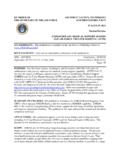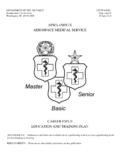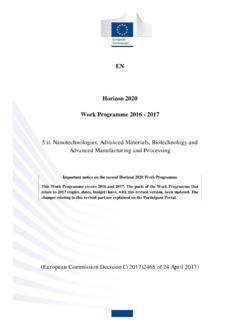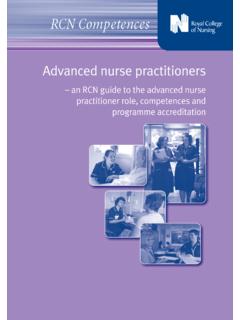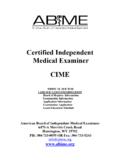Transcription of MRI Safety at 3T versus 1 - Kopp Development, Inc
1 The Internet Journal of World Health and Societal Politics TM MRI Safety at 3T versus Jennifer Jerrolds (R)(CT)(MR) Shane Keene MBA, RRT-NPS, CPFT, RPSGT Citation: Jennifer Jerrolds & Shane Keene: MRI Safety at 3T versus : The Internet Journal of World Health and Societal Politics. 2009; Volume 6, Number 1. Abstract The purpose of this article is to educate medical professionals on the Safety concerns that arise when a healthcare organizations converts from a Tesla MRI scanner to a 3 Tesla MRI scanner. This article explains the differences between the two systems and the Safety concerns associated.
2 One of the obstacles that an MRI Technologist endures is that some implanted materials that have been considered safe for many years are now contraindicated on a 3T system. At a minimum the standard has changed. I will provide examples of why Safety awareness needs to heighten in this environment. The findings show that even though there are new challenges associated with medical advancement in stronger magnetic field scanners, most patients can still be scanned safely in these environments. There are Safety texts and online references that provide up to date information about almost every implant and the level at which that implant is considered safe, which helps to alleviate some of the associated stress healthcare professionals face every day in an MRI environment.
3 Introduction Patients that could once be scanned safely in a (T) MRI scanner are now facing more rigorous screening when attempting to be scanned at medical centers that have traded in their system for a newer 3T scanner in an attempt to achieve higher quality imaging quicker than ever before. Some facilities have replaced existing scanners to be abreast of the new technology not realizing some revenue may be lost due to the Safety differences associated with the two systems. With stricter Safety guidelines work flow is hindered which in turn makes a facility less productive. One of the challenges is that the MRI Safety committee has only tested a limited number of the foreign bodies a patient could potentially have.
4 Frank G. Shellock, provides the only comprehensive database that includes objects tested relative to the MRI environment. Over 1,800 objects have been tested and more than 600 have been tested at 3 Tesla. As a result, a large number of implants such as some stents that were at one time considered safe for T have not all been cleared for the 3T systems. A high percentage of patients have some type of implant, therefore, the transition for the MRI Technologists is challenging, when all the Safety rules that the MRI users have been so accustomed to suddenly change with a new system install.
5 Implants are not the only Safety concerns with a higher field system; the FDA restricts the amount of heat that can be induced in a given human tissue. The accepted levels are reached more quickly in 3T scanning, which results in longer scan times to enable the tissue enough time to cool to an allowable level. The supporting equipment for the MRI suite has to be MRI compatible in order to function properly inside the scan room, which is also more expensive. MRI equipment can range from special monitors, intravenous pumps, pressure injectors, and ventilators. Most equipment was designed as compatible.
6 When transitioning to a higher field system, sites are finding that new equipment, more rigorous site planning, and more stringent Safety measure are in order to support the new innovation in a safe manner. Literature Review Magnetic resonance imaging began to make an impact in the clinical practice in the mid 1970's. The most common MRI scanners operated at field strengths of T (Tesla). Eventually, advances made high field MRI feasible and systems operating at T have become the clinical standard (Tanenbaum 2005). Five years ago 3T systems were for advanced research only and today they are appearing in both hospitals and outpatient facilities throughout the country.
7 When you combine the growth in MRI scanners and increase in magnet strength, the risk factors multiply in the MRI environment. Another consideration Emanuel Kanal MD (Founding Member, Board Member, Officer, and/or Member of numerous national and international professional societies, and serves as a consultant to the FDA on MRI Safety issues) says is the number of new practitioners in the MRI environment. The volume of examinations has increased and many exams are being performed by practitioners that are new to the modality. While we always have had Safety guidelines, the increased numbers of MRI practitioners and the increased number of patients involved in these procedures all increase the likelihood of mishaps occurring in the MRI environment says Kanal (Harvey 2004).
8 Market data late in 2004 indicated that 3T systems made up 25% of new high field MRI scanner purchases. The higher quality images and faster scan times made available with the higher field MRI scanners is so significant that most if not all imaging facilities will make the change soon if it not in the near future. The shift in interest from to 3T as a research device to clinical practice validates what was once considered very high field MRI is now practical and potentially superior to for clinical indications throughout the body (Tanenbaum 2005). The clinical use of 3 Tesla MRI systems for brain, musculoskeletal, body, cardiovascular, and other applications is increasing worldwide.
9 Because previous investigations performed to determine MRI Safety for implants and devices used mostly MRI systems with static magnetic fields of Tesla or less, it is crucial to perform ex vivo testing at 3 Tesla to characterize MRI Safety for these objects, especially with regard to magnetic field interactions. Importantly, a metallic object that displayed weakly ferromagnetic qualities in association with a Tesla MRI system may exhibit substantial magnetic field interactions during exposure to a 3 Tesla MRI system (Shellock 2008). With the increasing advent and use of Tesla and higher strength magnets, users need to recognize that one should never assume MRI system compatibility or Safety information about a device if it is not clearly documented in writing.
10 Decisions based on published MRI Safety and compatibility claims should recognize that all such claims apply only to specifically tested conditions, such as static magnetic field strengths, static gradient magnetic field strengths and spatial distributions, and the strengths and rates of change of gradient and radiofrequency (RF) magnetic fields (Barkovich, Bell, & Kanal 2007). Magnetic field strengths are measured in units of gauss (G) and Tesla (T). One Tesla is equal to 10,000 gauss. The main magnetic field of a T magnet is about 30,000 times the strength of the earth's magnetic field.



